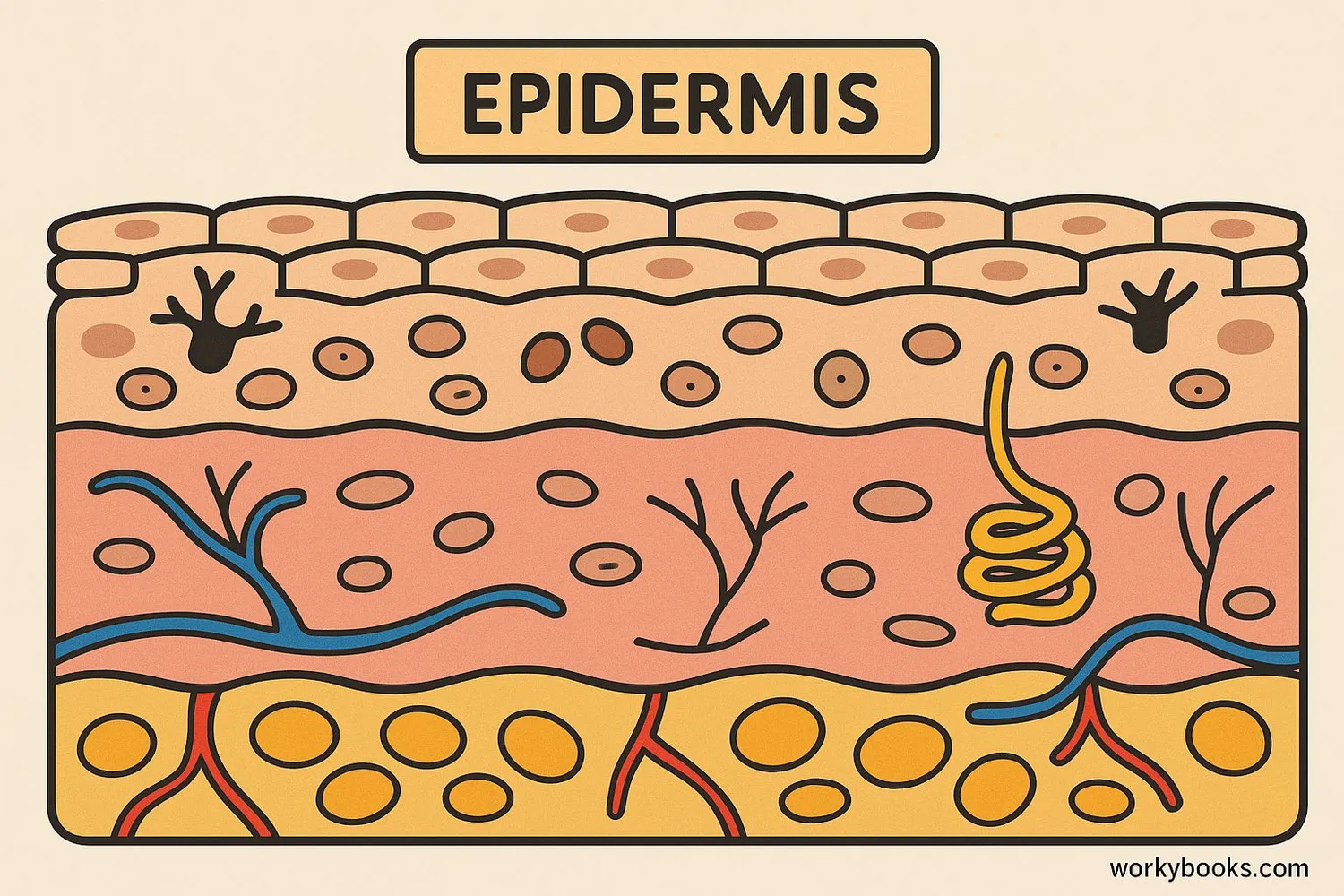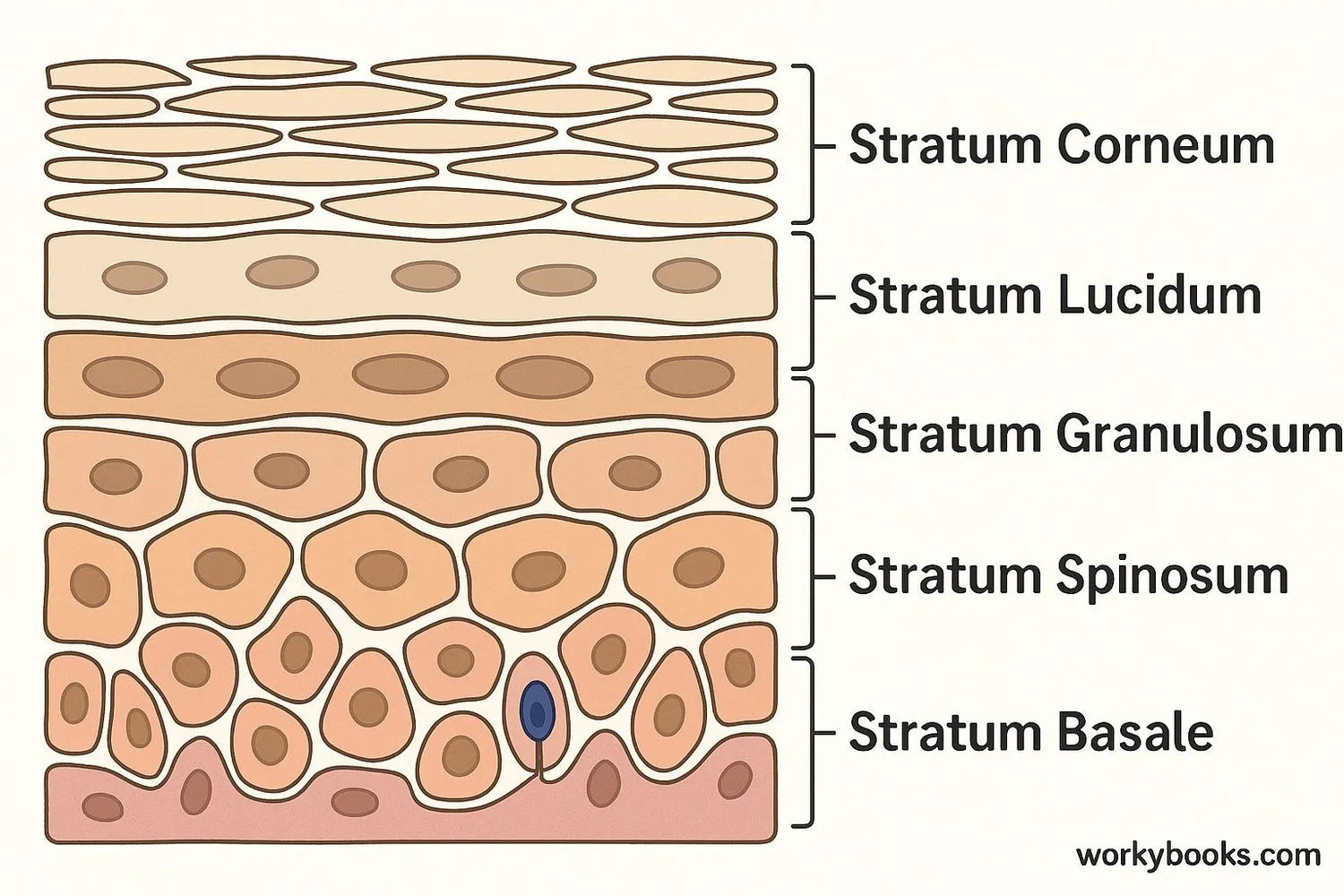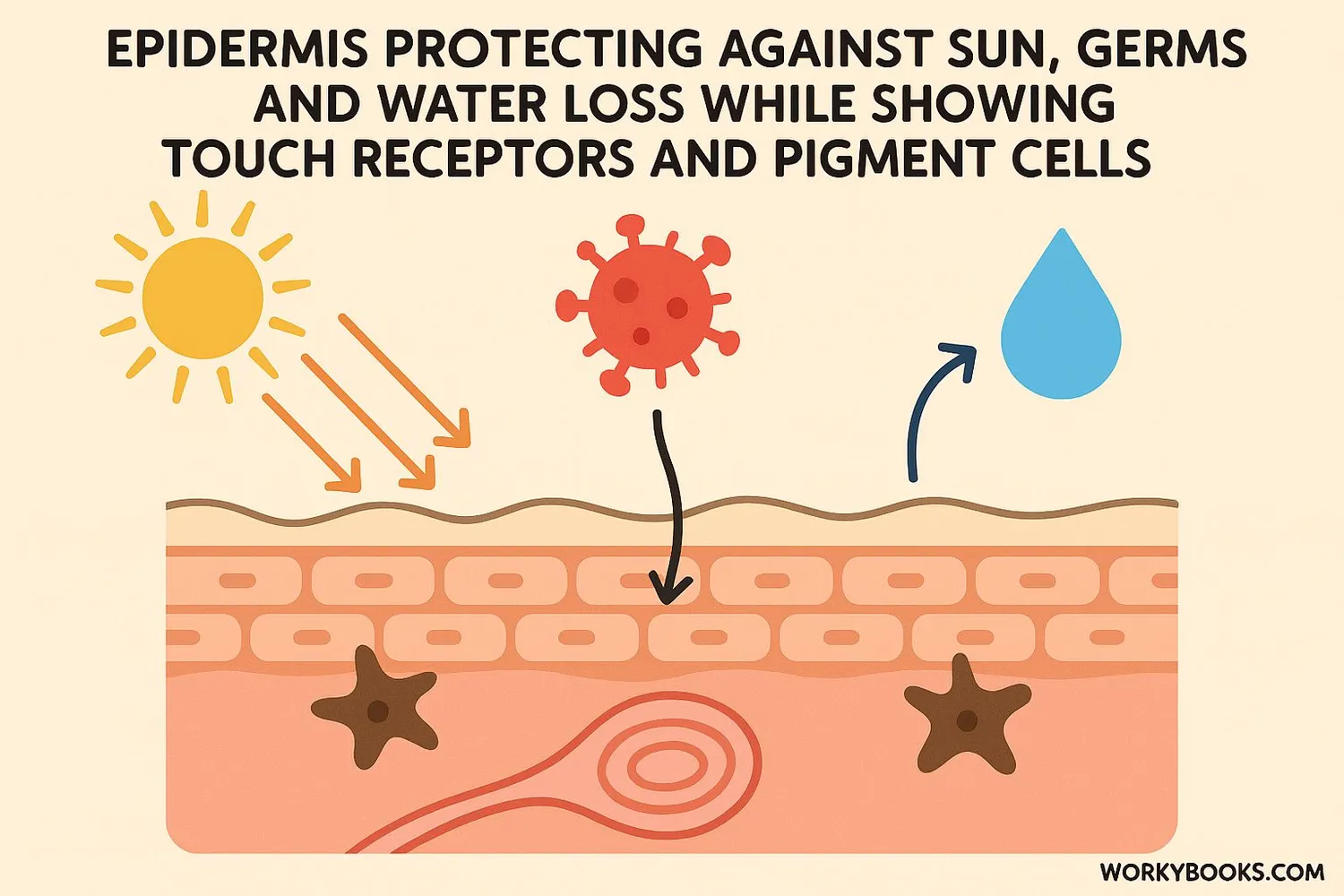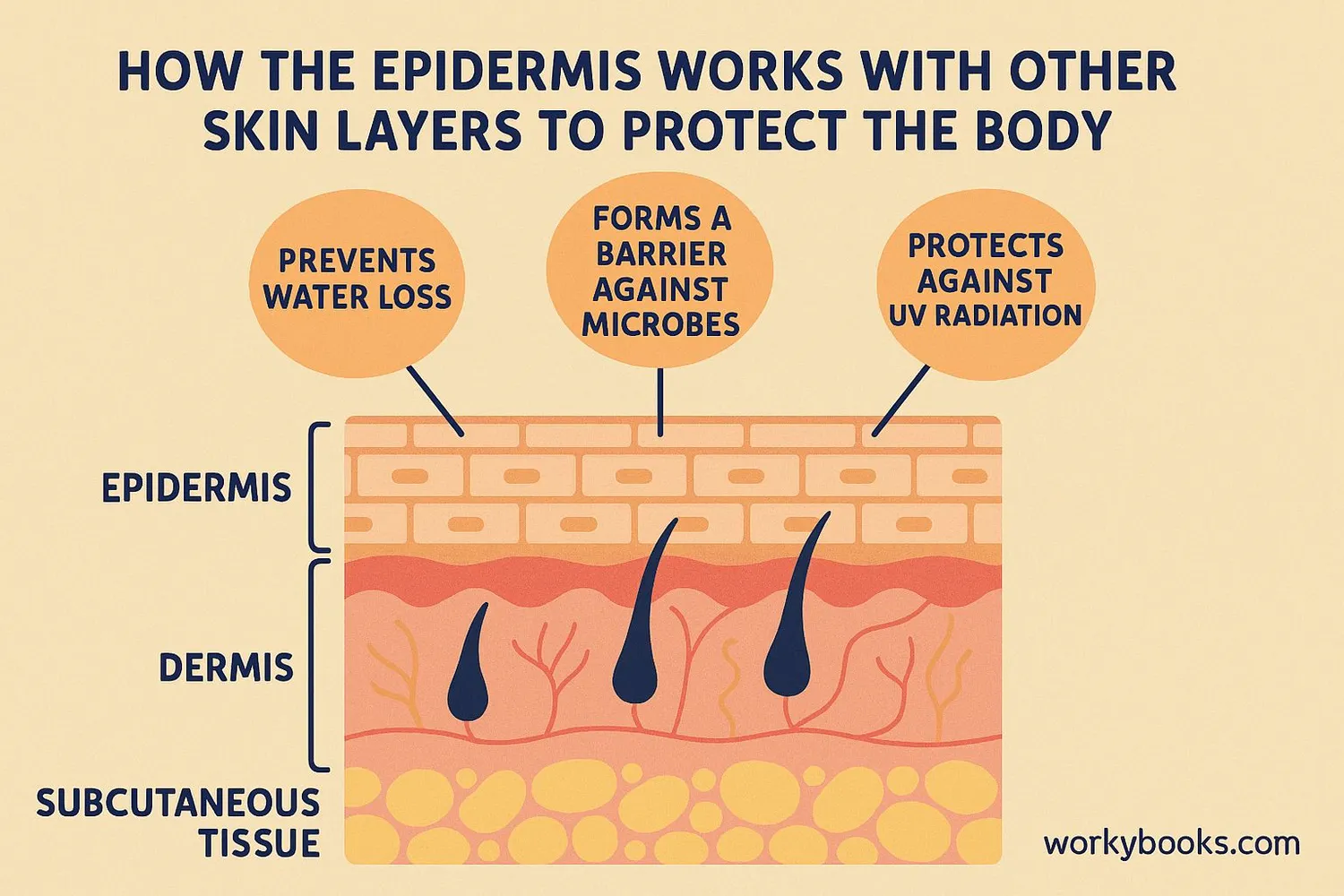Epidermis - Definition, Examples, Quiz, FAQ, Trivia
Discover how your body's protective barrier works to keep you healthy
What is the Epidermis?

The epidermis is the outermost layer of your skin—the part you can see and touch. It's your body's first line of defense against the outside world! This protective barrier keeps germs out and important fluids in.
The epidermis is mostly made up of cells called keratinocytes that produce a tough protein called keratin. This is what makes your skin strong and waterproof. Even though it's thin—about the thickness of a sheet of paper—the epidermis does an important job protecting your body.
Skin Fact!
Your epidermis is constantly renewing itself! It takes about 4-6 weeks for new skin cells to travel from the bottom layer to the surface.
Layers of the Epidermis

The epidermis might look like a single layer, but it's actually made up of five different layers! Each layer has a special job in protecting your body and creating new skin cells.
Stratum Corneum
The top layer made of dead, flat skin cells that protect the layers below
Stratum Lucidum
A clear layer found only in thick skin like palms and soles
Stratum Granulosum
Where cells begin to flatten and fill with keratin
Stratum Spinosum
Contains cells that help your immune system fight germs
Stratum Basale
The bottom layer where new skin cells are constantly being made
New skin cells are born in the deepest layer (stratum basale) and slowly move upward. As they travel to the surface, they change shape, fill with keratin, and eventually die. By the time they reach the top, they've become tough, flat cells that form a protective barrier.
Cell Journey!
It takes about 2-4 weeks for a new skin cell to travel from the bottom layer to the surface of your epidermis.
Functions of the Epidermis

Your epidermis works like a superhero suit, protecting you in many different ways:
Protection
Forms a barrier against germs, chemicals, and physical injury
Waterproofing
Prevents water from entering or leaving your body unnecessarily
UV Protection
Contains melanin that protects against sun damage
Sensation
Contains nerve endings that detect touch, pressure, and temperature
Renewal
Constantly makes new cells to replace old, damaged ones
The epidermis also helps regulate your body temperature through sweating and contains special cells called melanocytes that give your skin its color. This color helps protect you from the sun's harmful UV rays.
Why the Epidermis is Important

Your epidermis might seem like just the "outside" of you, but it's actually essential for your survival! Here's why it's so important:
Germ Defense
Prevents bacteria and viruses from entering your body
Hydration Control
Keeps your body from losing too much water
Sun Protection
Melanin absorbs harmful UV radiation from the sun
Without a healthy epidermis, we would:
• Lose water quickly and become dehydrated
• Be vulnerable to infections from germs
• Suffer more damage from the sun
• Have trouble regulating our body temperature
The epidermis also helps your immune system by housing special cells that detect invaders and alert your body's defenses. It's amazing how this thin outer layer does so much to keep you healthy!
Skin Health Tip!
Keeping your skin moisturized helps maintain a healthy epidermis barrier. Drink plenty of water and use sunscreen to protect your skin!
Skin Knowledge Quiz
Test what you've learned about the epidermis with this quiz! Answer all 5 questions to see how much you know about your skin.
Frequently Asked Questions
Here are answers to common questions about the epidermis:
Skin Trivia
Discover amazing facts about your epidermis and skin!
Skin Size
Your skin is the largest organ in your body! An average adult's skin weighs about 8 pounds and covers an area of about 22 square feet.
Cell Production
Your epidermis produces about 30,000-40,000 new skin cells every minute! That means you shed about 30,000-40,000 dead skin cells every minute too.
Variable Thickness
The thickness of your epidermis varies across your body. It's thinnest on your eyelids (about 0.05 mm) and thickest on the palms of your hands and soles of your feet (about 1.5 mm).
Constant Renewal
Over your lifetime, you'll shed about 40 pounds of skin cells! Your entire outer layer of epidermis is replaced about every 4-6 weeks.


